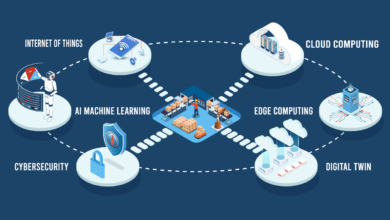Unlocking the Mystery of “NF IV-SSCI HI SA Vendorpymt”: What It Means for You

Ever stumbled upon something so confusing it made you stop in your tracks? Well, if you’ve come across “NF IV-SSCI HI SA Vendorpymt,” I wouldn’t be surprised if you did just that! This head-scratching term sounds like a secret code or maybe something out of a sci-fi novel, but believe it or not, it’s rooted in something much more practical: business payments.
If you’re in the world of vendor management or involved in finance, these types of cryptic terms often come into play. So, what exactly is “NF IV-SSCI HI SA Vendorpymt,” and more importantly, how does it relate to you? Don’t worry, by the end of this article, it won’t seem nearly as intimidating. Let’s break it down, bit by bit.
What is “NF IV-SSCI HI SA Vendorpymt”?
At first glance, “NF IV-SSCI HI SA Vendorpymt” looks like a random jumble of letters and numbers, but it’s a shorthand notation often found in the world of payment processing. Let’s dissect it:
NF IV: This likely represents a specific category or tier within a payment processing system. In some systems, “NF” could refer to “Non-Fundable” transactions, while “IV” may stand for a certain vendor type or service level.
SSCI: This part of the acronym could signify “System Service Charge
Indicator,” suggesting a fee or indicator tied to the vendor or payment type.
HI SA: This could be an abbreviation for a “High-Security Alert” within the vendor payment system, often used for higher-risk transactions that may require additional verification.
Vendorpymt: Vendor payment—easy enough, right? This is where it all ties back to the vendor side of things. Vendors receive payments for goods and services, and these types of cryptic codes usually track these transactions in a more detailed system.
But why use such complicated abbreviations in the first place? Well, in finance and payment gateways, everything is about efficiency. Systems are designed to process thousands, if not millions, of transactions per day, and shorthand like “NF IV-SSCI HI SA Vendorpymt” keeps things streamlined.
How Does “NF IV-SSCI HI SA Vendorpymt” Impact Vendors?
Now that you know what it stands for, you might be asking yourself, “So what? How does this affect me as a vendor?” The answer: in more ways than you’d expect!
Payment Classification and Delays
The “NF IV” part of the code can indicate the payment’s nature. If it refers to non-fundable transactions, this could mean that the payment is being held for some reason (maybe a dispute or a verification issue). Vendors need to be aware of these codes to know when they’ll get paid. Imagine delivering a service and seeing “NF IV” next to your payment—time to hit pause and investigate!
Risk and Security Concerns
When you see “SSCI HI SA,” it’s usually a red flag, especially the “HI SA” part, which points to heightened security concerns. Higher security alerts may require vendors to provide additional documentation, update their information, or undergo security checks. This can be frustrating, but it’s a safeguard against fraud.
Vendor Compliance
Sometimes these codes indicate more than just transaction status—they can also flag compliance issues. If you’re a vendor working with government entities or high-security clients, payment systems may implement more stringent guidelines, often reflected in these kinds of codes.
Why Should You Care About “NF IV-SSCI HI SA Vendorpymt”?
You might be thinking, “Okay, I get the gist of it, but why should I care?” Well, if you’re a vendor or manage payments for a business, understanding these codes can make your life a whole lot easier. Let’s look at a few reasons why:
Know When You’ll Get Paid: Recognizing payment statuses and codes will help you forecast when funds will hit your account.
Resolve Issues Faster: By identifying potential hold-ups (e.g., security concerns), you can address problems before they become major headaches.
Prevent Fraud: Some of these codes are red flags for suspicious activity. Being aware of them could protect you from fraudulent transactions or costly chargebacks.
Common Challenges with Vendor Payments
Let’s face it: no one likes delays when it comes to payments. But sometimes, challenges are inevitable. Here are a few common issues that vendors face, and how “NF IV-SSCI HI SA Vendorpymt” might signal trouble:
Payment Holds or Delays
Certain transactions might be flagged as “NF IV,” meaning they’re under review or on hold. Vendors might not know this unless they pay close attention to their payment reports.
Chargebacks
Payments labeled with security codes like “HI SA” might signal an increased risk of chargebacks. Keep an eye on these to avoid the hassle later.
Security Protocols
When “SSCI” appears, it’s a reminder that the transaction might involve an extra service charge for security. Be aware that this could impact your bottom line!
How to Avoid Payment Delays
Navigating the maze of vendor payments can feel overwhelming, but a few proactive steps can help you stay on track.
Keep Your Records Updated: Always ensure that your vendor information (bank details, tax info, etc.) is current. This helps avoid unnecessary delays.
Monitor Your Transactions Regularly: Stay on top of your payment reports and watch for unfamiliar codes like “NF IV-SSCI HI SA Vendorpymt.” Spotting issues early can help you resolve them faster.
Stay Compliant: If you’re dealing with government agencies or high-risk sectors, make sure you comply with all the necessary regulations. This includes providing the right documentation and adhering to payment processing rules.
Frequently Asked Questions (FAQs)
What does “NF IV-SSCI HI SA Vendorpymt” mean for my business?
It’s a shorthand notation in payment processing that could indicate non-fundable transactions, security concerns, or service charges. If you spot this code, it might be time to investigate your payment status.
Why are vendor payments delayed with these codes?
Payments marked with “NF IV” could be on hold due to compliance checks, disputes, or verification issues. Meanwhile, “SSCI” and “HI SA” codes might signal higher security risks, slowing down the process.
How can I resolve issues flagged by these codes?
Start by contacting your payment processor or bank to understand why the payment is delayed. Sometimes, providing additional documentation or confirming your information can speed things up.
Conclusion
“NF IV-SSCI HI SA Vendorpymt” might look like a random string of letters and numbers, but now you know it has real-world implications for vendor payments. By understanding what each part of this code means, you can better manage your business’s financials and avoid payment delays.
So, the next time you see this cryptic term in your payment reports, you’ll know exactly what’s going on—and most importantly, what to do about it! Stay informed, stay compliant, and you’ll avoid those dreaded payment hiccups.




Программа для видеонаблюдения – это инструмент для создания интеллектуальной системы видеонаблюдения. Программное обеспечение для IP камер легко интегрируется в существующую IT-инфраструктуру. Интеллектуальная видеоаналитика, включающая распознавание лиц и распознавание номеров автомобилей, обеспечивает высокую точность детекции. Возможность записи с камер видеонаблюдения позволяет восстановить хронологию событий. Система включает в себя распознавание дыма и огня, повышая уровень безопасности объекта.
На данном сайте вы можете приобрести онлайн телефонные номера различных операторов. Они могут использоваться для подтверждения аккаунтов в различных сервисах и приложениях.
В ассортименте доступны как постоянные, так и временные номера, которые можно использовать для получения сообщений. Это удобное решение если вам не хочет использовать личный номер в сети.
купить американский номер
Оформление заказа максимально простой: определяетесь с подходящий номер, оплачиваете, и он сразу будет доступен. Попробуйте услугу прямо сейчас!